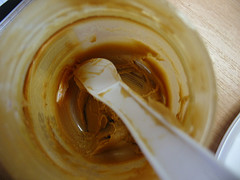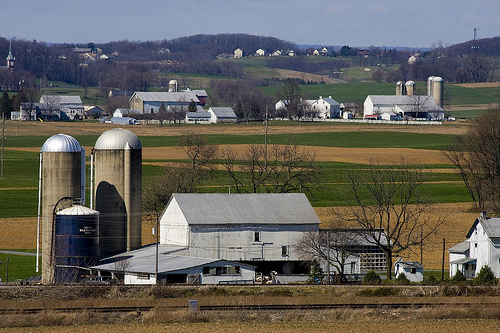 Photo: Stephen DannWill consumers get the jarring truth about why peanut butter prices are suddenly chunky? So far, it looks like the media is feeding them a smoothed-over version that omits the impact of the climate crisis.
Photo: Stephen DannWill consumers get the jarring truth about why peanut butter prices are suddenly chunky? So far, it looks like the media is feeding them a smoothed-over version that omits the impact of the climate crisis.
First, the bad news. As CNN Money reports, peanut butter prices have skyrocketed in a matter of days:
Kraft will raise prices for its Planters brand peanut butter by 40% starting Monday, while ConAgra has instituted increases of more than 20% for its Peter Pan brand that went into effect this month. J.M. Smucker , which makes Jif, will introduce price hikes of around 30% starting Tuesday.
Consumers, meanwhile, are already seeing these increases reflected at grocery stores.
The increased price of a low-cost, healthy staple is another blow to food budgets already spread thin. And that last bit of the story is a kick in the Fluffernutter, isn’t it? Grocery stores paid the old, lower price for the jars on their shelves — but they’ll charge you the new, higher price.
So why the need to raise prices?
While spokespeople for several grocery chains declined to provide specific pricing figures, the peanut industry is clearly under pressure this year after one of the worst harvests in recent memory.
Prices for a ton of runner peanuts, commonly used to make peanut butter, hit nearly $1,200 this month, according to the U.S. Department of Agriculture. That’s up from just $450 per ton a year ago. Overall, the USDA projects that American peanut production will hit 3.6 billion pounds this year, down 13% from last year.
Analysts attribute this drop to the intense heat and drought that hit the southern U.S. this year, as well as to high prices for other crops that led farmers to focus their efforts elsewhere. [Emphasis mine.]
But no mention of global warming fueling those extreme weather events? There’s a major gap in the coverage between new media and old media. While bloggers like Grist’s Jess Zimmerman, ThinkProgress’ Stephen Lacey, and Huffington Post’s Tara Kelly connect the dots between extreme weather and the climate crisis, reporters for traditional media outlets won’t go there, either due to a lack of knowledge of the latest climate science or to a fear of blowback from politically motivated science deniers. A Google News search shows zero traditional media outlets tying the higher peanut butter prices to climate change-related extreme weather — even as the science on climate change loading the dice for extreme weather is clearer than ever.
That’s part of a broader trend. Even with 2011 as the 11th-hottest year on record and America is wracked by historic heat and drought, floods, and fall storms, most journalists remain silent about the climate connection.
I spent Columbus Day in New Hampshire, where heat broke records on three straight days in nearby Portland, Maine, including the Oct. 9 record being shattered by an incredible six degrees. But the forecast predicting the record heat on Manchester’s WMUR-TV didn’t reference global warming. Instead, the hosts strained to avoid any mention of it. “Weird!” one blurted out. “Strange!” shrugged the other.
A full 23 years after James Hansen told Congress [PDF] that human-made carbon pollution was already warming our planet, the public still isn’t being given the facts about our climate reality.
It’s nuts.



